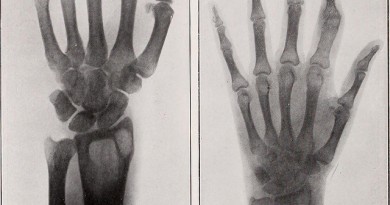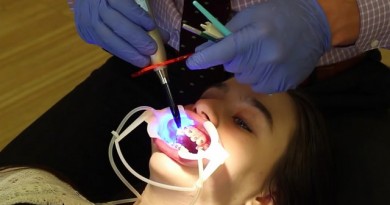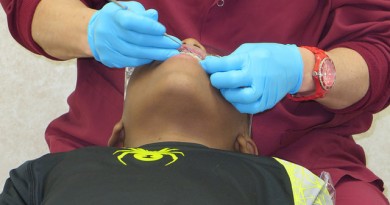How Much Does A Filling Cost?
Even if you take excellent care of your teeth, you may still develop cavities. However, brushing your teeth and flossing regularly in addition to regular dental cleaning and x-rays can help lessen or eliminate the number of cavities you develop. A cavity usually begins as a small soft section or pit in your tooth that will progressively grow bigger. With regular dentist appointments, your dentist can find and fill the cavity before it becomes too large. Whether or not you have insurance, you may wonder: how much does a filling cost?
What Is The Average Cost Of A Filling?
The average cost of a filling can depend on several factors, including the compound used for your tooth. Compound resin fillings are one of the most effective materials, and may cost between $150 and $200. If you decide on a metal filling, the cavity filling cost will average from $75 to $145 each. When you figure in the costs of your dentist’s time, where you live, and if the filling material is a composite or amalgam, the average is $50 to $300 each for cavity filling cost. Keep in mind that cheaper fillings will not last as long as the more expensive superior filling materials. The best fillings may last a lifetime, which makes the few extra dollars well worth it for the cost of a cavity filling. Silver fillings are less expensive than white, which blend into your teeth for less visibility. The cost of fillings may also depend on whether they are for baby teeth or permanent teeth, and if they are in the rear or front of the mouth. The depth of the cavity can also have an effect on the cavity filling cost.
What Is The Cost Of Cavity Filling Without Insurance?
The actual cost of a cavity filling depends on whether you have insurance. If you are having silver amalgam fillings put in place in the front baby teeth, expect to pay between $74 and $102 for the first surface in your mouth, and $107 to $142 if the dentist needs to fill the fourth surface. In an adult’s tooth, the same silver amalgam filling will run from $97 to $131 first surface and $128 to $183 for your mouth’s fourth service. Composite resin cavity filling cost in permanent teeth can run between $91 to $118, or $187 to $248 for the fourth surface. Composite resin fillings for the teeth in the rear of the mouth are more expensive because of their placement, and will cost between $93 to $183 or $216 to $288 for your mouth’s third surface. If you are on an insurance dental plan, you may have cavities filled for free or for a fraction of the full cost. Check with your insurance company to find out their coverage options.
Conclusion
When you are considering the cost of filling a cavity, keep in mind that the more expensive options will last longer. If you take excellent care of your teeth, including brushing after every meal, flossing, avoiding sugar, and having your teeth professionally cleaned 2 times each year, you can avoid the more expensive cost that may occur if you require a root canal to fix your dental problems. If you are unable to afford insurance, many local agencies can recommend dental programs that will lower the cost of your dental care. Most dental schools also offer inexpensive cleanings by their students, who appreciate having the practice of cleaning your teeth, conducting x-rays, and other jobs required of dentists and dental hygienists. They will usually have a day set aside each week when clients can come in for these inexpensive services. Be prepared to spend a longer time for these appointments than for a regular dentist, as the students will most likely work more slowly. Good dental care can help you keep your teeth healthy for years to come and is well worth the time in your daily routine and your annual cleanings, both for your own comfort and for the cost of filling a cavity.
What Is Involved In Getting A Cavity Filled?
Although the cost of filling a cavity may seem high, their durability will allow them to last anywhere from a few years to a lifetime. The actual appointment usually does not take more than 30 minutes to fill a single cavity. First, you must decide whether you want to use Novocain, which will numb the area around the tooth. The dentist will give you a Novocain shot or use a wand that utilizes a small needle hooked up to a Novocain source. The numbing medicine is slowly injected into your gums. In a few minutes, the dentist will be able to drill once the area has lost feeling. A laser or drill is used to remove a portion of the tooth that has become decayed, and it is prepared for filling. The dentist will clean the area to remove bacteria and debris. Then, the filling material will be placed in thin layers in order to harden before the next layer is applied. When the hole is filled, the filling will be polished. Your tooth may feel a bit sore for a few hours, but you will usually be able to keep regular food in the same day.
What If I Have Pain After Cavity Filling?
If your pain lasts longer than a few hours after the cavity is filled, there may be other issues involved. For instance, you may have an allergy to the material the dentist used for the filling, especially if it was made from silver. There may also be a structural problem if the filling is fitted improperly or cracks. If your tooth is sensitive, it may take a few weeks to adjust to pain from hot or cold foods, biting pressure, and temperature. If it lasts longer, contact your dentist. If the filling is very large, it may be touching the nerves or root of your tooth. If this is the case, you may need a root canal. This involves removing the tissue under the tooth, which will eliminate the pain.
- 660SHARES






